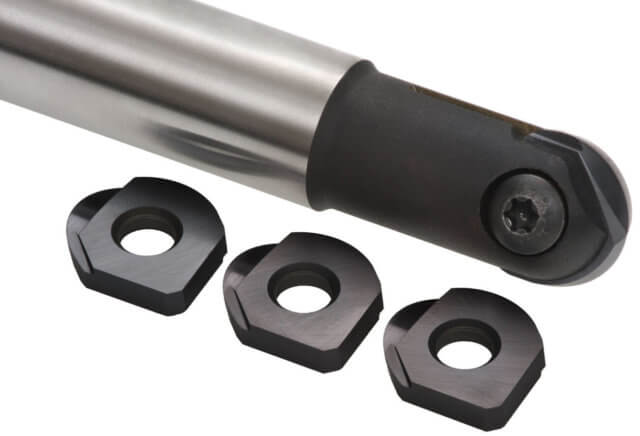 Diamond-like-carbon (DLC) coatings are a particular area of expertise for Richter Precision Inc. Among PVD & PaCVD coating compositions and technology, DLC coatings stand out as a distinctive category. These coatings exhibit a desirable combination of a low coefficient of friction and high micro-hardness, making them extremely effective in many tribological and wear applications.
Diamond-like-carbon (DLC) coatings are a particular area of expertise for Richter Precision Inc. Among PVD & PaCVD coating compositions and technology, DLC coatings stand out as a distinctive category. These coatings exhibit a desirable combination of a low coefficient of friction and high micro-hardness, making them extremely effective in many tribological and wear applications.
DLC coatings are formed when ionized and decomposed carbon or hydrocarbon species land on the surface of a substrate with energy typically 10-300eV. DLC films may possess exceptional mechanical (high hardness), optical (high optical band gap), electrical (high electrical resistivity), chemical (inert) and tribological (low friction and wear coefficient) properties and can be deposited at low substrate temperatures (~200°C).
DLC films are generally amorphous (i.e have no dominant crystalline lattice structure) and consist of a mixture of sp2 (graphite) & sp3 (diamond) phases. Control of film properties is strongly dependent on the flux characteristics of the chosen deposition technique (PVD sputter or evaporation and Pa-CVD), metal and hydrogen content within the film, sp2:sp3 ratio, substrate bias voltage, ion energy and ion density as well as substrate temperature. DLC film friction coefficient against steel generally ranges from 0.05-0.20, whilst film hardness and sp3 content can be tailored for specific applications. Metal and hydrogen containing DLC (Me-DLC or a-C:H:Me) exhibit hardness in the range 500-2000HV with 35% sp3, metal free DLC (C-DLC or a-C:H) typically 1500-4000HV and up to 75% sp3 , whilst tetrahedral amorphous carbon (ta-C) can be 4000-9000HV with 80-85% sp3.
Richter Precision Inc. offers a complete range of DLC phase compositions, and hence the widest possible range of selectable mechanical and physical properties. The characteristics of the tools and/or application will determine which DLC coating structure would be best suited. Please see the table below for a complete listing of our available DLC coating compositions.

DLC Coating Technical Data
| Proprietary Name | Composition | Thickness (microns) | Micro-Hardness (HV) | Coefficient of Friction | Maximum Working Temperature | Coating Process Temperature |
|---|---|---|---|---|---|---|
| Titankote™ C10 | DLC (ta-C) | 0.5-2.5 | 5000-9000 | 0.1 | 400°C/752°F | 220°C/448°F |
| Titankote™ C11 | DLC (a-C:H) | 1.0-4.0 | 2000-3000 | 0.1 | 350°C/662°F | 220°C/448°F |
| Titankote™ C12 | Me-DLC | 1.0-5.0 | 1000-2000 | 0.1 | 350°C/662°F | 160°C/320°F |
| Titankote™ C14 | C-DLC | 1.0-3.0 | 2200-4000 | 0.06 – 0.15 | 350°C/662°F | 180°C/356°F |
Typical Applications for DLC Coatings
Cutting*
- Drills
- End Mills
- Razor Blades
- Carbide Inserts
Metal Forming*
- Punches
- Dies
- Fine Blanking Tools
- Coining Dies
Molding
- Plastic Injection Molds:
- Cavities & Cores
- Ejector Pins
- Rubber Molds
Engines
- Valves
- Wrist Pins
- Tappets
- Pistons
Components
- Shafts
- Gears
- Bearings
- Cams or Slides


